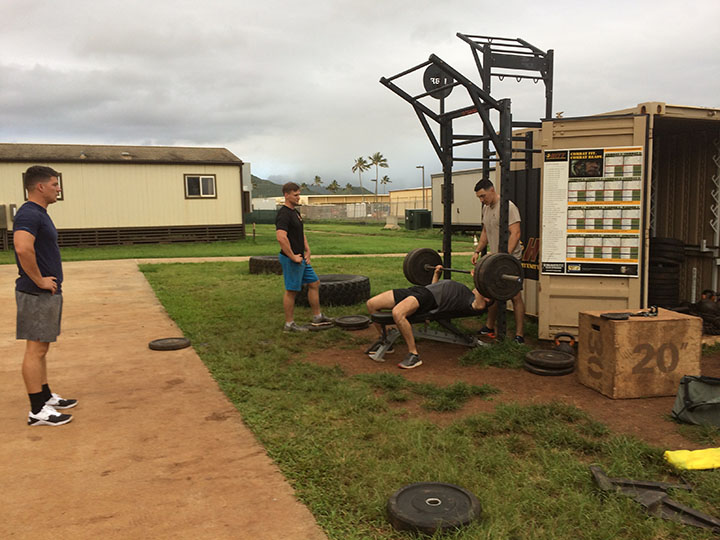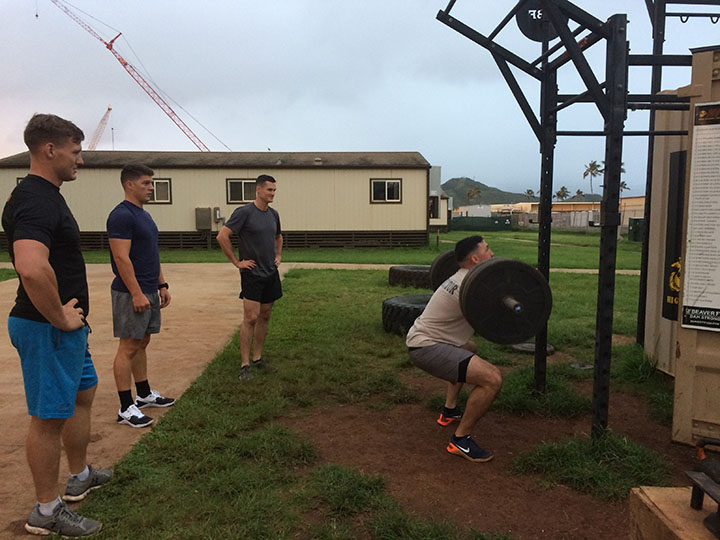
By Rob Shaul, Founder
In 2018 I had the opportunity to put four USMC 1st Lieutenants stationed at USMC Base Hawaii through the MTI Relative Strength Assessment. There were two goals: (1) get a snapshot of the relative strength of active duty Marine Infantry Officers, and; (2) test a change to the way pull ups are scored in the assessment.
Background
MTI developed the Relative Strength Assessment in 2016 to answer this question for mountain and tactical athletes: “Am I Strong Enough?”
Both athlete groups have mulit-modal fitness demands – strength, work capacity, endurance, agility, core, etc. A confounding truth of fitness programming is time spent working on one fitness attribute, strength for example, comes at the expense of other attributes like endurance and work capacity.
With the MTI Relative Strength Assessment, we wanted to functional relative strength standard for our athletes, and for military athletes in particular, the strength assessment works with the MTI 3/3/3 Military Athlete Endurance Assessment and the MTI Tactical Athlete Work Capacity Assessment to establish standards for the three primary areas of mission-direct military fitness.
Importantly, this assessment measures “Relative” strength or strength per bodyweight. Both tactical and mountain athletes primarily move themselves during missions, training or events – thus relative strength is most important.
Also, by choosing to measure relative strength, this assessment automatically “scales” for each individual athlete regardless of size, allowing a small and large athlete to be compared “apples to apples” in terms of strength.
Assessment Details, Scoring & Change to Pull Up Weighting
The MTI Relative Strength Assessment deploys a 1 Repetition Maximum effort (1RM) on three classic barbell strength exercises – the front squat, power clean and bench press, as well as a max rep strict pull up effort. Here are the four events in the order they are completed in the assessment:
(1) 1RM Front Squat
(2) Max Rep Strict Pull Ups
(3) 1RM Power Clean
(4) 1RM Bench Press
Scoring for the barbell exercises is simple – the 1RM for each is that event’s score.
Pull Ups are scored differently: multiply your max rep pull up times 7% of your bodyweight.
For example, if you weigh 200 pounds, and get 12 pull ups, you’d multiply 7% of 200 (200 x .07 = 14) and 12.
14 (7% of your bodyweight) x12 (your max rep pull ups) = 240. 240 is your pull up “score” for the assessment.
** Note on Pull Ups … the Max Number you can use for scoring for this assessment is 20. So even if you tested at 25x pull ups, the most you can use for your scoring is 20.
Previously we had weighted pull up heavier. We has used 10% of the athlete’s body weight. But ultimately, feel this over-emphasizes pull ups in the ultimate score and thus reduced this to 7% of the athlete’s bodyweight times his or her max rep pull ups.
Scoring Example:
Here are the event scores for a 200-pound male athlete:
- Front Squat 1RM: 275#
- Max Rep Pull Ups: 21 Reps
- Power Clean 1RM: 205#
- Bench Press 1RM: 295#
His pull up score is 7% of his bodyweight times the number of pull up reps. Remember, even though he completed 21 total reps, the most he can use for scoring is 20.
200 x .07 = 14. 14 pounds is 7% of his body weight.
14 x 20 (max number of pull ups he can use for scoring) = 280. So is pull up score is 280.
Relative Strength Score = Front Squat 1RM + Pull Up Score + Power Clean 1RM + Bench Press 1RM divided by bodyweight. So…. 275+280+205+295 = 1,055 divided by bodyweight (200) = 5.27.
Below is the scoring scale. A score of 5.27 is “Excellent” for male tactical athletes.
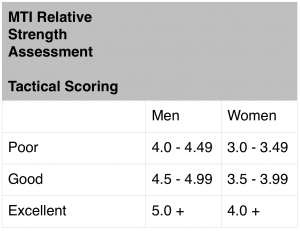
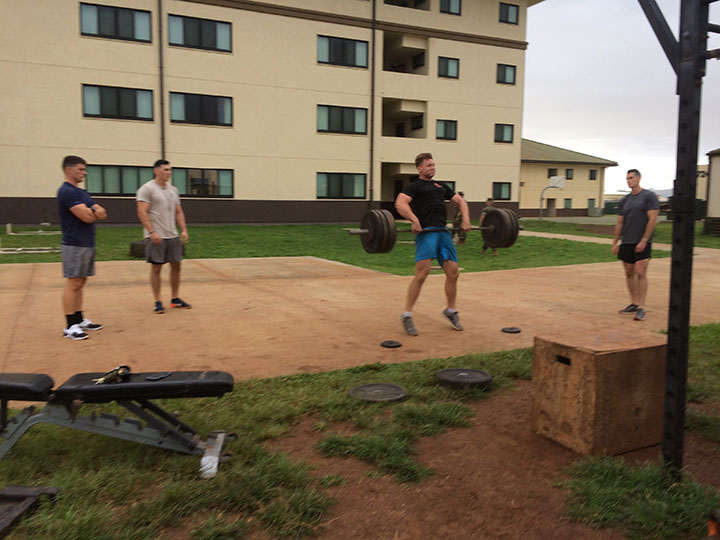
USMC Junior Officer Snapshot Scores & Discussion
The MTI Relative Strength Assessment was administered to 7 USMC Company Executive Officers, all 1st Lieutenants, on April 10, 2018. None of the Marines who took the MTI Relative Strength Assessment had trained specifically for it previously. All were volunteers. Scores are below:
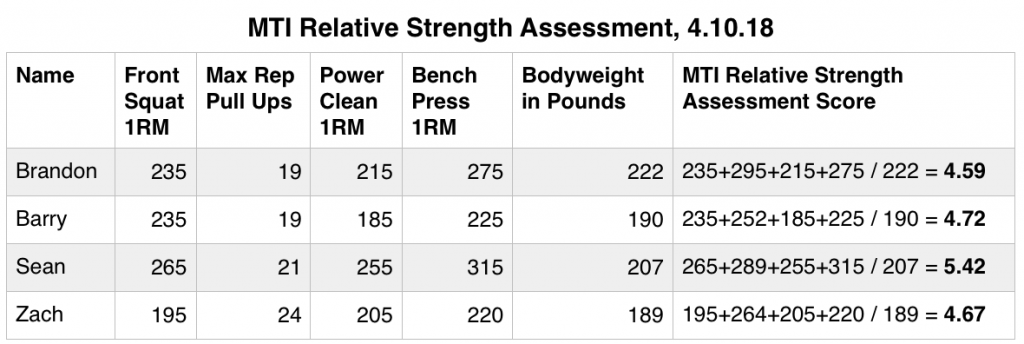
Overall I was pleasantly surprised by these scores. Three of the athletes scored “Good” and one, Sean, scored “excellent.”
As Company XOs, each junior officer had the liberty to train on his own, and each included free weight-based strength work as part of his training program.
A major disadvantage of this strength assessment is it does require familiarity with the three barbell-based strength exercises. Many line-unit infantry in the US Army and Marine Corps simply don’t have this experience – especially in the junior enlisted ranks. I had hoped to give the assessment to more marines from this unit, but during a short programming course with about a dozen Marines, asked how many knew what a power clean was. Only the officers in attendance raised their hands.
We conducted the assessment using a company HIIT box of equipment, and even though we conducted the assessment at 0600 on a Tuesday morning, no other Marines were competing with us for equipment. It was not being used.
Questions, Comments, Feedback? Email rob@mtntactical.com
You Might Also Like MTI’s Relative Strength Assessment Training Plan

